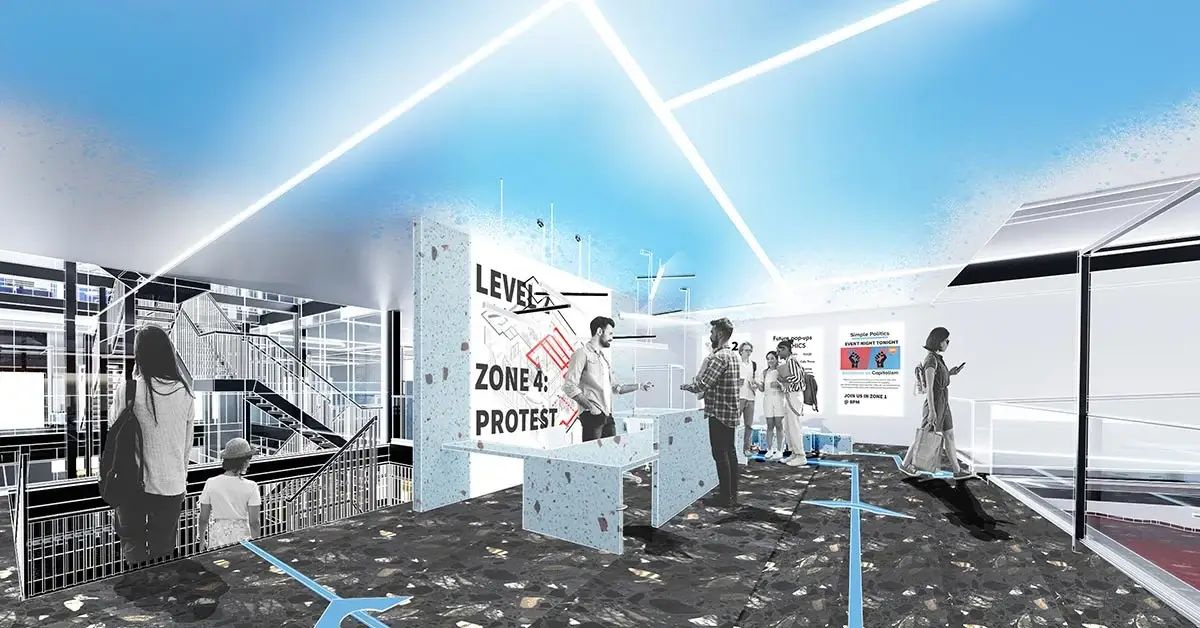
When executed well, interior design has the power to create spaces that are simultaneously functional, sustainable, inspiring, and boost people’s wellbeing.
This is a fundamental reason why a career in interior design can be highly rewarding. Gaining an MA in Interior Design can help you gain the research knowledge you need to push your creative boundaries and confidently take on any challenges that may present themselves along the way.
What types of roles are available in the interior design field?
If you have a qualification in interior design, there’s a diverse range of career options you can pursue.
Interior designers plan, research and manage projects to create interior spaces in buildings. Architectural interior designers have an additional understanding of the structural and material nature of buildings.
There are opportunities not just for interior or architectural interior designers, but also textile designers, graphic designers and many other related roles.
As an interior design professional, you can work as an in-house designer, consultant or contractor, in a variety of domestic or commercial design environments. Examples could include:
- retail
- hospitality
- leisure
- education
- exhibition
- healthcare
What will help me succeed as an interior designer?
There are a number of skills that will help you succeed as an interior design professional:
Creativity
To be successful in any design field, you need to have a creative mindset, and this goes for interior design professionals too.
To stand out from the crowd, you need to be able to consistently think creatively and push the boundaries when it comes to established ways of thinking, processes and techniques in the field.
You need the imagination to create functional and inspiring spaces that contribute to people’s wellbeing.
Sketching ability
Digital technology is transforming the interior design industry and how design professionals create visual representations of their work.
Rhino, AutoCAD and Vectorworks are the typical software programs that interior designers use, but there are many others available too.
There’s still a place for hand-drawn sketches as well. Many interior designers use a mixture of hand-drawing techniques and computer-software generated designs to create visuals for their clients.
Communication
A career in interior design calls for a great deal of communication with clients and other stakeholders.
You’ll need to be a good communicator to explain your vision to your clients and listen to their needs.
Good communication will help you attract new clients, retain clients, and be able to work effectively with other professionals who will help bring your designs to life.
Collaboration
Further to needing to be a strong communicator, you’ll also need to be a good collaborator with a team mindset to succeed in your interior design career.
That means you’ll need to have the collaborative skills to work well together with a variety of different people with a range of personalities, communication styles, and skillsets.
Working well collaboratively can maximise your ability to create innovative spaces with impact, as well as help you expand your professional network.
Project management
The design process involves several different phases and tasks, as well as multiple stakeholders, resources, potential risks and budgets.
This is where your project management ability will come into play. With strong project management, you’ll be able to lead the end-to-end process of an interior design project and ensure the project aligns with client goals, deadlines and budgets.
How can an MA help me enhance my practice further?
An MA in interior design can help you enhance your existing practice, as well as your understanding of key design sectors.
The AUB Online MA Interior Design is research-led, allowing you to pursue your own specialist research focus and create evidence-based solutions to current and future design challenges.
Study 100% online and start in January, May or September:
Featured image credit: Natalia Drezek
Related posts
Passivhaus: The gold standard in energy efficiency
Learn more about Passivhaus-standard building and what criteria constructors need to meet to be...
Read the storyInterior design in educational spaces
Discover how interior design plays a role in educational spaces and the learning experience.
Read the storyHow to become a freelance interior designer
Turn your interior design passion into a freelance career. From portfolios to rates, here's all you...
Read the storyStart your creative journey here.
Want to chat or ask a few questions? Fill this in and we’ll give you a call back.
